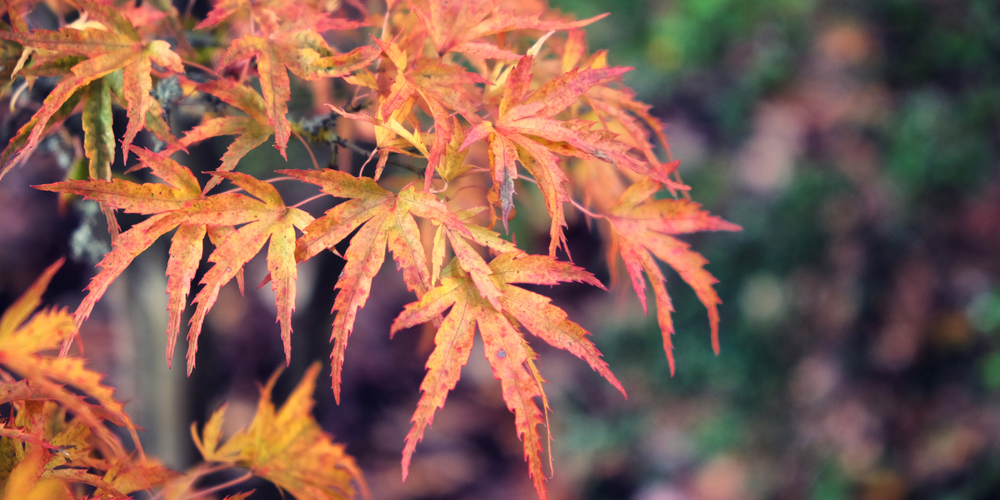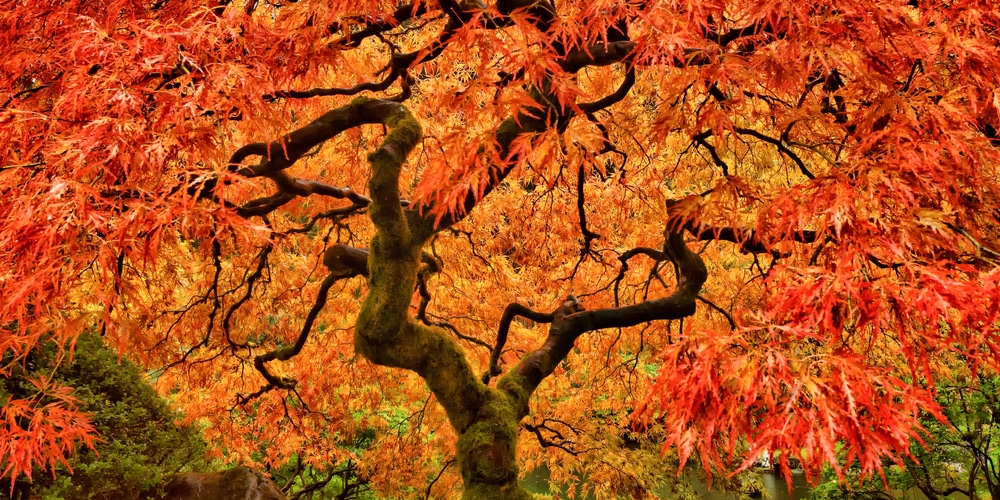The Japanese Maple is a small tree that has the splendor and color of its bigger cousins. If you have one in your garden, consider yourself lucky!
Have you noticed your maple leaves drooping lately and not growing as much? It might be due to giving your plant too much water. Here’s what you can do to check Japanese Maple overwatering symptoms and how to fix them.
Signs of an Overwatered Japanese Maple
The following are telltale clues that show that you may have overwatered your Japanese maple tree:
- Weak, yellow leaves
- Root rot
- Signs of Verticillium wilt
Yellowing and Weak Leaves
One of the best ways to determine if you’ve been overwatering your Japanese Maple plant is to check the leaves. Healthy plants will usually sport healthy and green foliage. In the case of Japanese maples, they should have a burgundy, red or purple color depending on the season.
Furthermore, the leaves should be sprightly and not droop or sag. Yellowed leaves mean the tree is getting too much water and that the roots are not getting enough oxygen.
Root Rot
Another common symptom of overwatering is root rot, although it may not be evident at first. Root rot is when the plant’s roots have become brown or black and have lost their ability to take nutrients and water from the soil.
Checking for root rot in a Japanese maple might be difficult if it’s planted in your garden or yard, but you can try to partially dig up the surrounding soil to expose a part and do an inspection. Also, you can try to see if there are red cankers or sores in the root, which indicates rotting.
Verticillium Wilt
Verticillium wilt is a disease in the soil that affects hundreds of plant varieties, including the Japanese Maple. The tree is weak and susceptible to it, and unfortunately, there’s very little you can do if the fungi happen to get into your tree.
Symptoms of verticillium wilt include curled and dropping leaves, as well as yellowing or gray foliage in certain areas.
How to Fix an Overwatered Japanese Maple
Keep Your Japanese Maple Happy
The best defense against pests and diseases is a healthy plant. When they’re stressed they tend to be more susceptible, and the same goes for Japanese Maple trees.
Meeting its growing requirements will go a long way towards achieving this end. You’ll want to place your tree where it gets dappled sun or partial shade. Regular fertilizing using compost will give it much-needed nutrients. Mulch gives it protection from the heat and preserves soil moisture so you won’t have to water as often.
Check the Soil Before Watering
Just because it says that Japanese Maples should get consistent watering doesn’t mean you should water them every day.
Observe your plant and the soil where it’s planted- does it seem happy? Is the soil still wet? Then it may be a good idea to hold off for a few days. Remember that Japanese maple does very well in a medium that allows water to pass through. This means heavy clay soil should be amended with sand and organic matter, and sandy soil should be mixed with potting media.
Allow the top inch or two of the soil to be dry before watering again.
Well-Drained and Appropriate Soil is the Key
If you see signs of verticillium wilt and root rot then you’ll want to change the soil. Waterlogged mediums cause these diseases, and you can try to fix an overwatered Japanese Maple by giving the roots more air so the plant can breathe.
Repot the Plant If Grown In A Container
Repotting is the ideal solution to save an overwatered Japanese Maple. You can start by gently tipping the container to one side and easing out the plant. Shake off the excess soil around the roots and do an inspection. Remove browned or blackened roots using sterilized pruning shears or something similar.
You can air out your Japanese Maple for an hour or so before putting it back in its container with new soil. If the previous soil had too much clay, amend it with sand or organic matter. Make the soil moist and provide adequate lighting for a few days before you put it back to its original spot (or one that’s better for them).
Related Article: How Do You Plant a Japanese Maple in Clay Soil?


